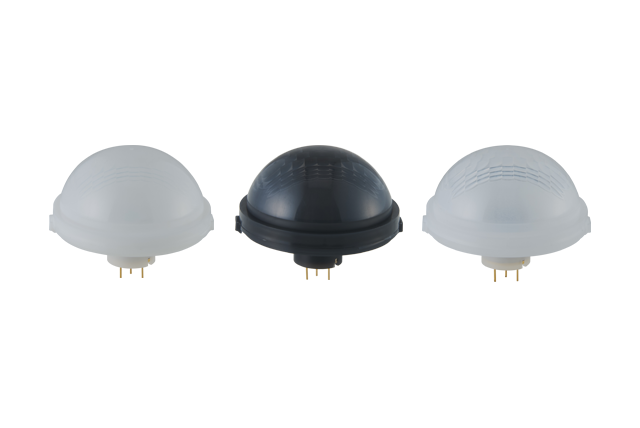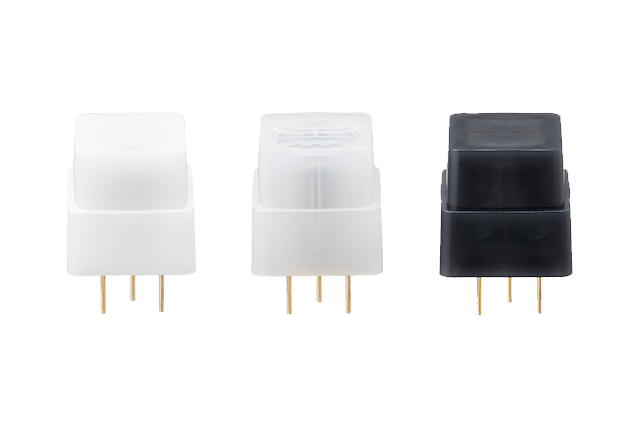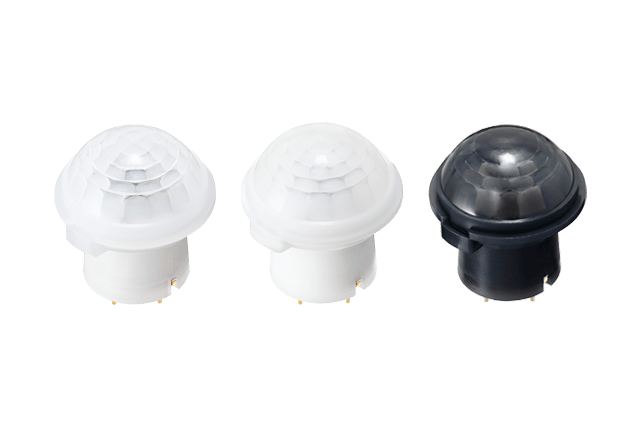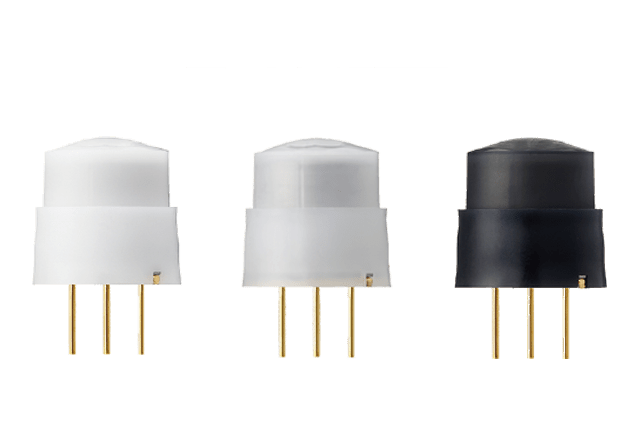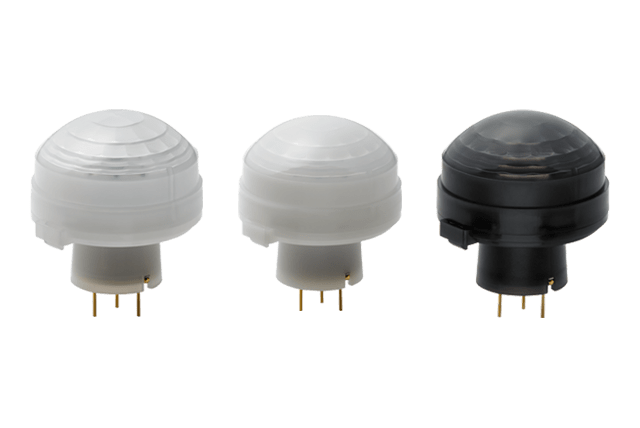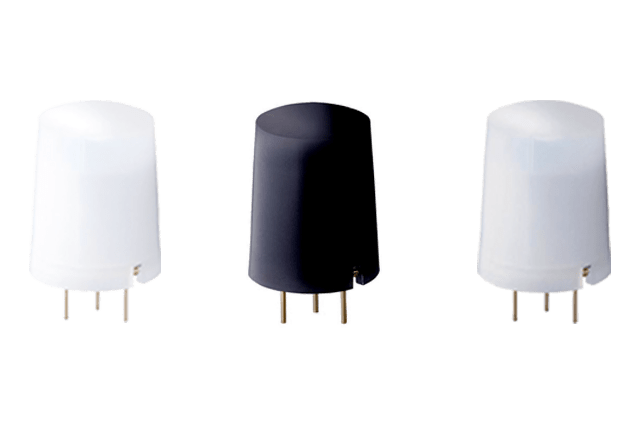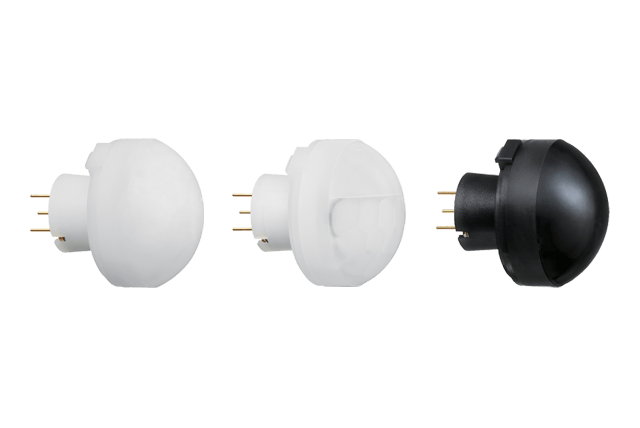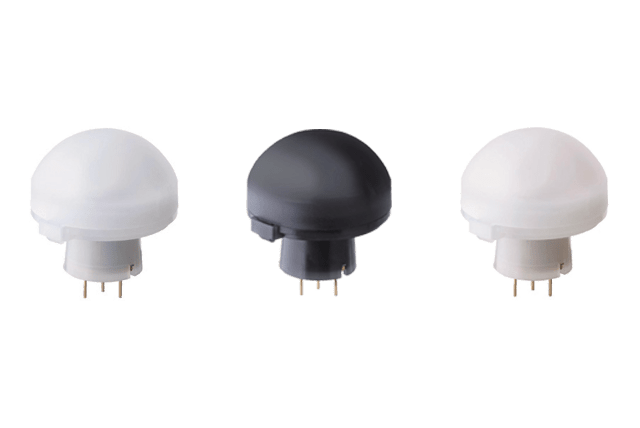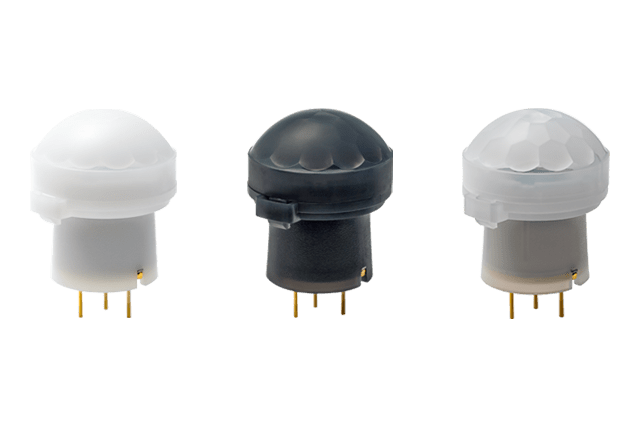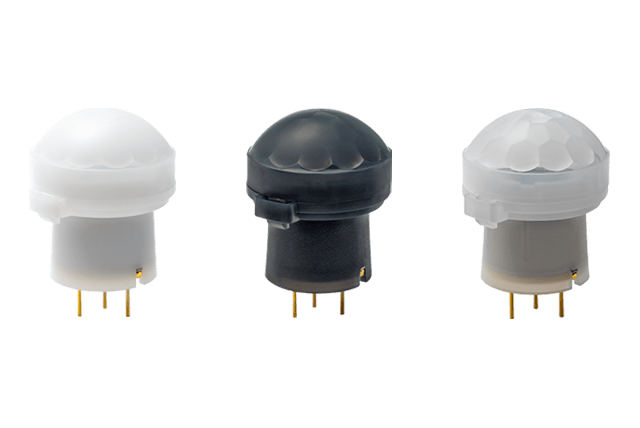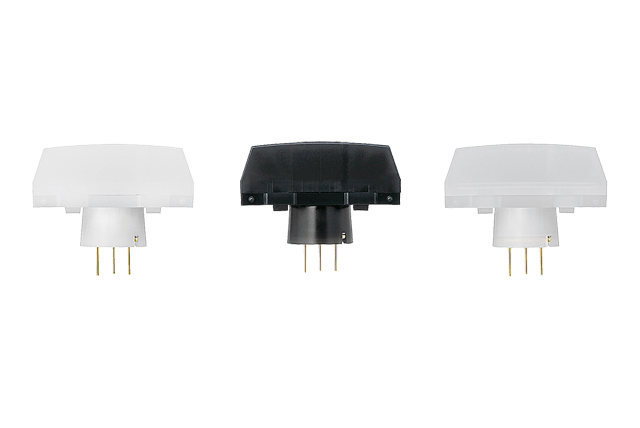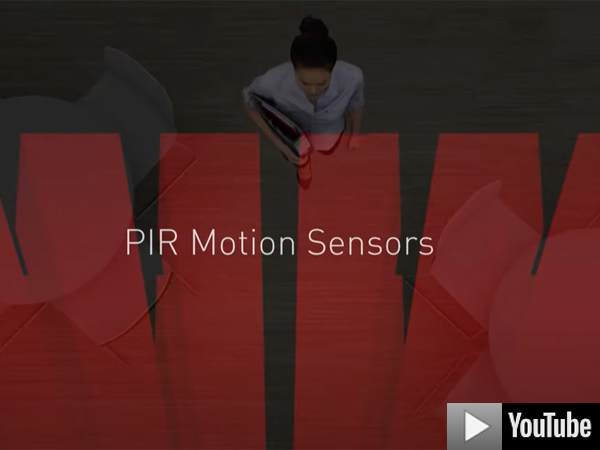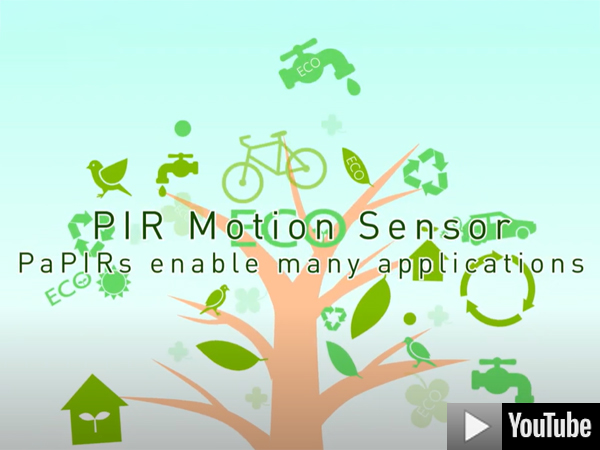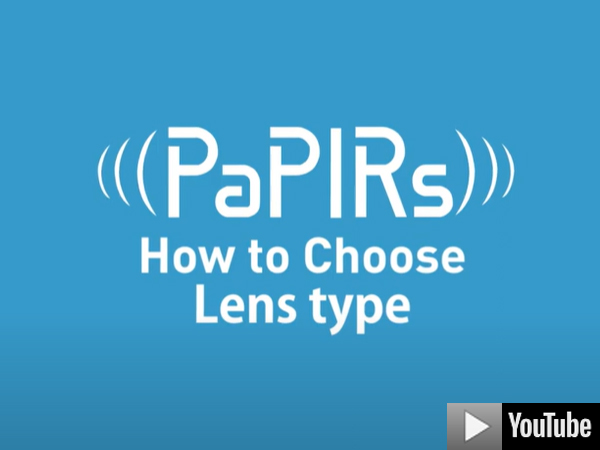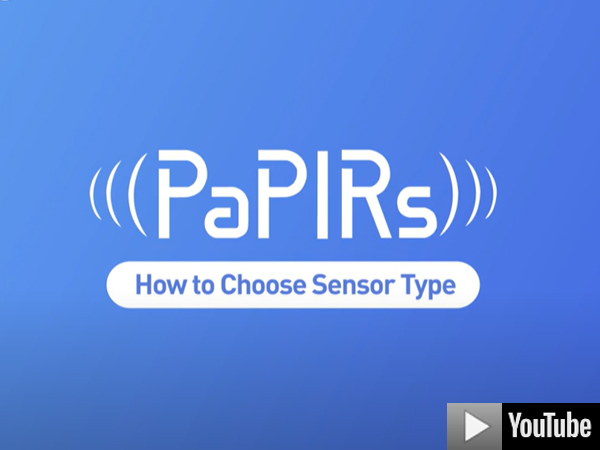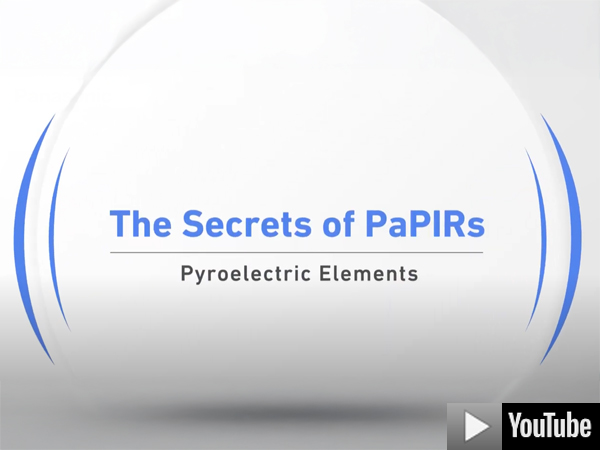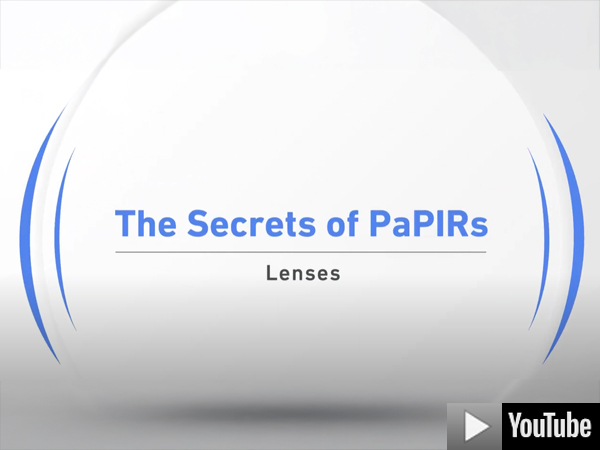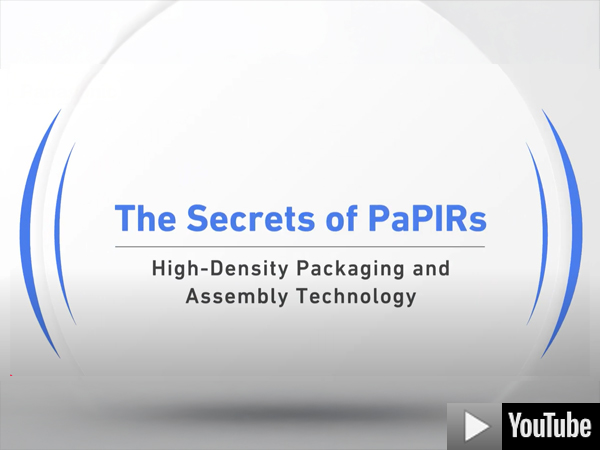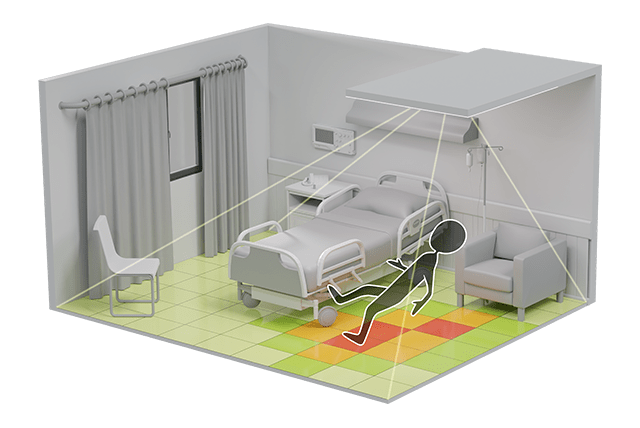
Passive Infrared Motion Sensors - PaPIRs
Extremely small and powerful
Passive or pyroelectric infrared (PIR) sensors are thermal detectors and suitable as motion sensors. They react to a change in infrared heat radiation in the environment, e.g. by a moving person (or object). The latest Panasonic PIR generation, the EKM family, comprises two mechanically identical series: the EKMB (1µA, 2µA and 6µA; digital output) and the EKMC series (170µA; digital and analog output).
The digital PaPIRs sensors offer fixed, preset switching thresholds, an open-drain output (On/Off), temperature and offset voltage compensation, and demonstrate extremely high electromagnetic interference immunity (please contact us for test reports). The analog PaPIRs sensors with an integrated op-amp circuit can be directly connected to the analog input of a microcontroller. The threshold levels can be adjusted accordingly to achieve the same sensitivity as the various digital versions. Moreover, they exhibit excellent electromagnetic interference immunity (please contact us for test reports).
The EKMB series (1µA, 2µA, 6µA, digital) can be used for battery-powered devices, and the EKMC series (170µA, digital and analog) for wired applications.
All different types of lenses are available in three colors: white, black, and pearl white.
How Panasonic Pyroelectric Infrared Sensors (PaPIRs) work
Downloads
| Name | Size | Date | Language |
|---|---|---|---|
| LUMINAID User Story | 992 KB | 28.03.2023 | English |
| Name | Size | Date | Language |
|---|---|---|---|
| Application Insight - PaPIRs | 5 MB | 31.05.2022 | English |
| Name | Size | Date | Language |
|---|---|---|---|
| PaPIRs PaPIRs+ Catalogue. PIR Motion Sensors 2025 | 5 MB | 19.09.2025 | English |
| Shortform Catalogue. Industry Europe. | 9 MB | 26.03.2024 | English |
| Name | Size | Date | Language |
|---|---|---|---|
| Flyer PaPIRs Motion Sensors | 1 MB | 12.02.2024 | English |
| PaPIRs DetectionAreaAdjustment_whitepaper | 3 MB | 09.10.2024 | English |
| Name | Size | Date | Language |
|---|---|---|---|
| PIR Motion sensors, Detection area image | 841 KB | 06.10.2023 | English |
Get an overview of the most important applications

Nowadays, pyroelectric motion detectors are not only used in the building automation respectively smart home area but also in the industrial and consumer sector. The applications go far beyond the classic areas such as light, air, climate and security applications. The highly sensitive PaPIRs are used, for example, in desk sharing applications. In addition, products with artificial intelligence use motion sensors to act at the right moment and pro-actively with potential users. Based on your target specification, we jointly select the optimal sensor, help you to generate the desired detection range, and give you product design and installation tips. Our team will support you with the design-in. Contact us!
Which is the best PaPIRs sensor for your application?

Panasonic's Passive Infrared Sensors (PaPIRs) are available in different versions. The individual motion sensors differ, for example,in power consumption, output interfaces, and lenses. In addition, most of the digital sensors can be ordered with different threshold values, which influences not only the sensitivity but also the false alarm probability (e.g. those caused by air or temperature fluctuations). The requirements for motion detectors are often not clearly definable and are completely different depending on the type of installation and installation location.
An important factor is, for example, the difference in temperature between the object to be detected and the background. The size and the speed of the target object, the size and pattern of the PIR's detection zones, the direction of movement relative to the sensor can also strongly influence the sensor performance. What still often works in simple reference environments can cause problems in the field.
With our know-how we would like to support and accompany you during the development phase. Not sure which is the right sensor or the optimal optics for your application? Want to limit the detection range of a certain sensor and don't know how? Contact us and we can find a solution together.

